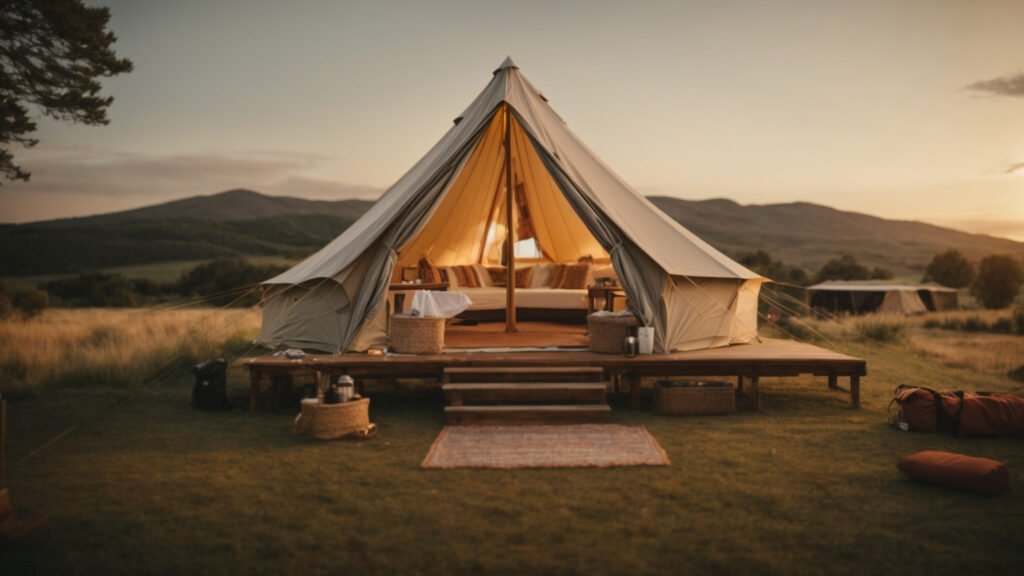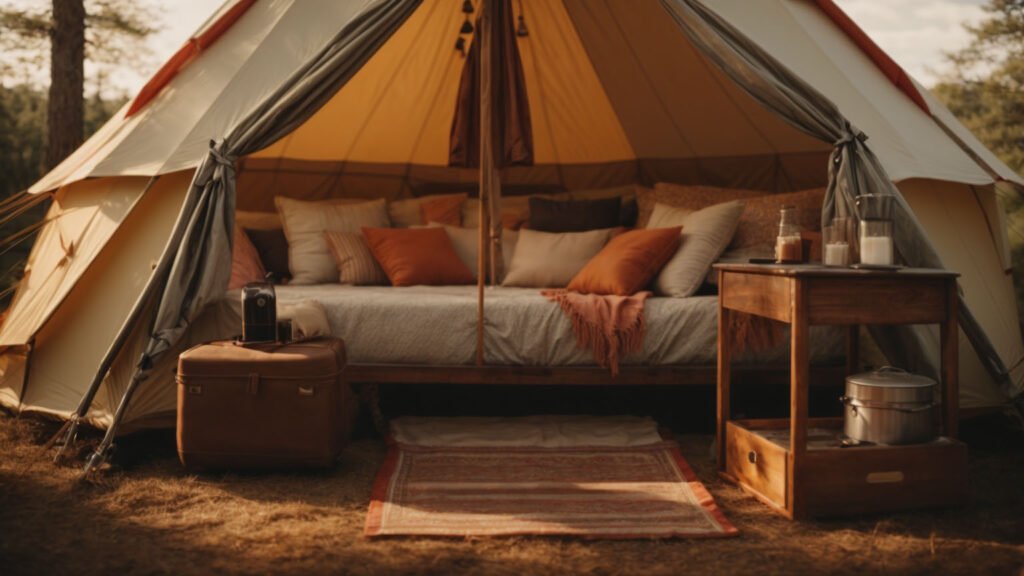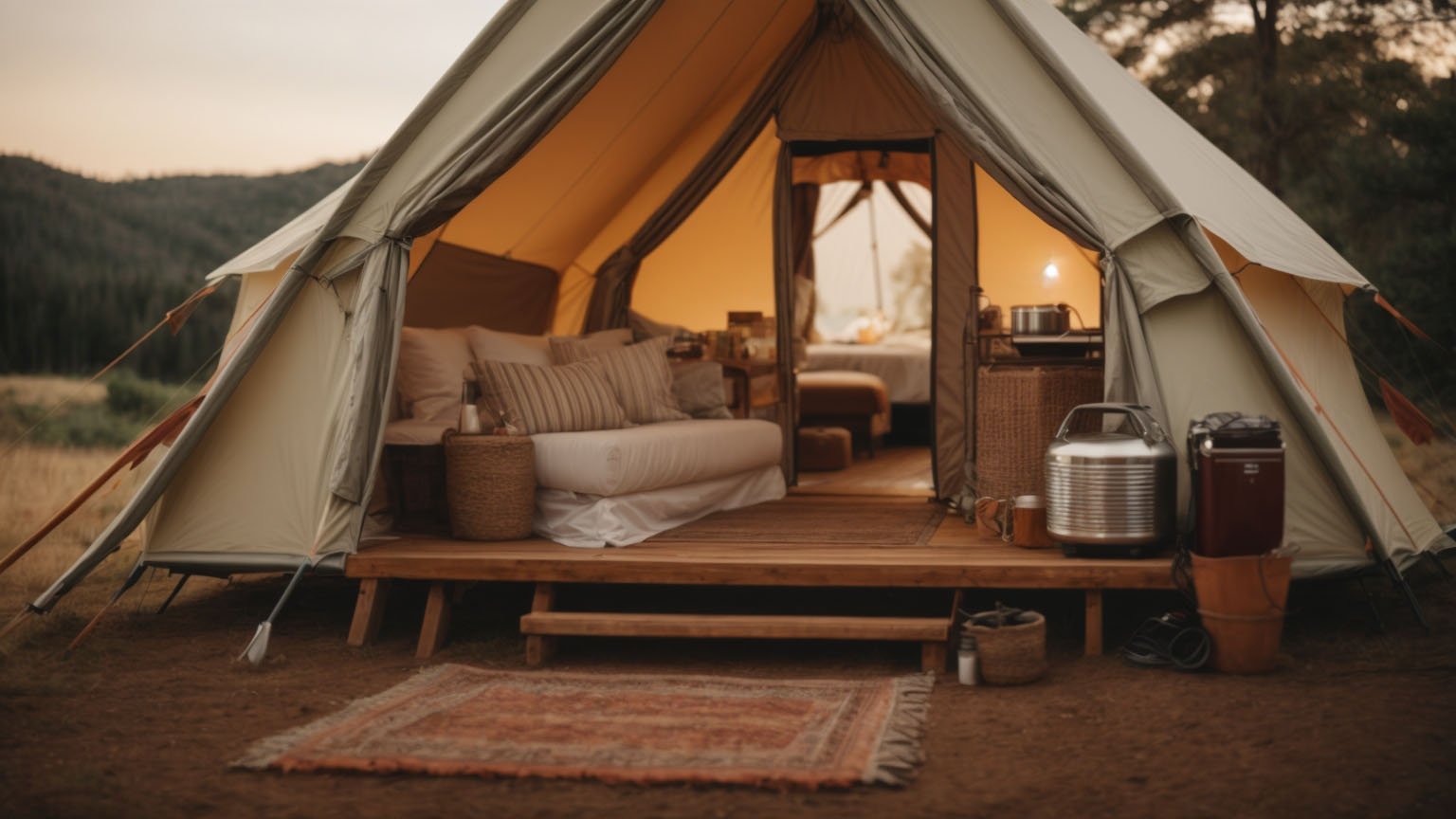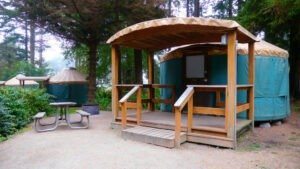Is glamping safety better than traditional camping? Let’s explore this question and provide vital information to help you make an informed decision. Whether you’re a seasoned camper or a first-time adventurer, understanding the safety of glamping versus camping is crucial for a worry-free and enjoyable experience. So, let’s dive into the world of glamping and camping and unravel the safety nuances that each option offers.
Is glamping safer than camping?
Regarding the eternal debate of glamping versus camping, one question often arises: Which option is safer? While both glamping and camping provide opportunities to disconnect from the hustle and bustle of daily life and immerse yourself in nature, there are specific safety considerations that one must take into account. In this article, we will explore the various safety measures and factors to consider in both glamping and camping experiences, ultimately determining if glamping is safer than traditional camping.
Glamping vs Camping
Glamping, a fusion of glamour and camping, offers a luxurious and comfortable camping experience. Unlike traditional camping, which involves setting up tents and roughing them out in the wilderness, glamping allows you to enjoy the beauty of nature without sacrificing comfort or convenience. Glamping accommodations range from cozy cabins and yurts to stylish treehouses and even luxurious safari tents. It typically offers beds, electricity, running water, and private bathrooms, providing a more lavish and pampered camping experience.
On the other hand, camping entails a more rustic and back-to-basics approach. It involves setting up a tent, cooking over a campfire, and embracing a simpler lifestyle closer to nature. Camping allows you to truly disconnect from modern amenities and immerse yourself in the great outdoors, offering a more adventurous and traditional camping experience.
Safety Measures in Glamping
When it comes to safety, glamping has several advantages over traditional camping. Most glamping accommodations are specially designed with safety in mind. The structures are typically sturdy and built to withstand various weather conditions, providing a secure and stable environment. Additionally, glamping sites often have strict safety regulations and standards to adhere to, ensuring the safety of their guests.
In terms of weather conditions, glamping accommodations usually have better insulation and weatherproofing compared to traditional camping tents. This means you are less likely to experience leaks, drafts, or temperature extremes. Glamping accommodations provide a cozy and comfortable shelter for hot summer days or chilly winter nights.

Safety Measures in Camping
While glamping may have inherent safety advantages, camping can be a safe and enjoyable experience if proper safety measures are followed. When setting up camp, choosing a level and secure location away from potentially hazardous areas like steep slopes or dead trees is essential. Ensuring your tent is pitched correctly, using sturdy tent poles, and securing guy lines are crucial for stability during inclement weather.
Weather conditions in camping can pose challenges, so it is essential to be prepared. Pack appropriate clothing, sleeping bags, and equipment to withstand varying temperatures. Always check weather forecasts and be ready for any potential weather changes. Investing in a high-quality tent to withstand the elements can significantly enhance your safety and comfort during camping trips.
Wildlife Encounters
Both glamping and camping experiences come with the possibility of wildlife encounters. Understanding the local wildlife and following safety guidelines to minimize risks is essential. In glamping sites, wildlife encounters are often less frequent due to the typically more controlled and developed surroundings. However, it is still important to secure food properly to avoid attracting wildlife and follow any specific guidelines provided by the glamping site.
Wildlife encounters are more common in camping, especially in remote or wilderness areas. It is imperative to store food in bear-proof containers or hang it high above the ground to prevent attracting animals. Understanding how to react when encountering wildlife, such as bears or snakes, is crucial for your safety. Researching the local wildlife and consulting with park rangers or experienced campers can provide valuable knowledge and precautions.
Fire Hazards
Fire safety is an essential aspect of both glamping and camping experiences. Glamping accommodations usually have fire safety measures, such as fire extinguishers and designated fire pits with safety guidelines. Glamping sites often have stricter regulations regarding open fires, reducing the risk of uncontrolled flames.
In camping, fire safety is equally important. Before starting a campfire, ensure you are following any local fire regulations and restrictions. Clear the area around the fire pit of any flammable materials, have water or sand nearby to extinguish the fire if necessary, and never leave a fire unattended. Properly extinguishing the fire before leaving the campsite prevents potential wildfires.
Access to Emergency Services
Regarding access to emergency services, glamping usually has an advantage over camping due to the proximity of amenities and staff. Glamping sites often have onsite facilities, such as first aid kits and staff trained in essential emergency response. In medical emergencies, they seek assistance or contact emergency services, while glamping is typically more accessible.
Camping may have limited access to emergency services, especially in remote or wilderness areas. It is essential to have a well-stocked first-aid kit and knowledge of basic first-aid techniques. Familiarize yourself with the location’s emergency procedures and have a reliable means of communication, such as a satellite phone or a whistle for signaling for help in emergencies. Planning and informing someone about your camping itinerary can also ensure assistance can reach you promptly.

Sanitation and Hygiene
Maintaining sanitation and hygiene is vital for a safe and comfortable camping or glamping experience. Most glamping accommodations offer private bathrooms and proper waste disposal systems, ensuring cleanliness and hygiene. The glamping staff typically undertakes Regular cleaning and maintenance, minimizing the chances of hygiene-related issues.
Camping, especially in more remote areas or primitive campsites, may lack private bathroom facilities. In such cases, following Leave No Trace principles and practicing proper waste disposal techniques is essential. Utilize designated restroom facilities if available, or dig a cathole at least 200 feet away from water sources. Good hand hygiene, including using hand sanitizers and washing hands with biodegradable soap, is crucial to preventing illness spread.
Security
Security is an essential consideration for both glamping and camping experiences. Glamping sites often have security measures, such as gated entrances, surveillance cameras, and onsite staff monitoring the premises. These measures contribute to safety and peace of mind while enjoying your glamping retreat.
Camping in remote areas or less developed campgrounds may require additional attention to security. Keeping your belongings secured and out of sight, locking your vehicle when leaving the campsite, and being cautious of any suspicious activities are essential to enhance security while camping. Building community with neighboring campers can also contribute to a safer camping environment.

Personal Safety
Ultimately, personal safety lies in the hands of the individual, regardless of whether you are glamping or camping. Understanding and following safety guidelines, being aware of your surroundings, and having a preparedness mindset are vital for a safe experience.
Whether you choose glamping or camping, always inform someone about your plans, including your destination and expected return time. This ensures that someone knows your whereabouts and can raise an alarm if necessary. A basic knowledge of first aid and carrying essential supplies, such as a first aid kit and a survival kit, can prove invaluable in unforeseen situations.
In conclusion, both glamping and camping have safety considerations, and whether one is safer depends on various factors such as location, amenities, and individual actions. While glamping provides certain inherent safety advantages due to structured accommodations and onsite amenities, camping can also be safe and enjoyable with proper preparation, knowledge, and adherence to safety measures. Ultimately, the decision between glamping and camping should be based on your preferences and desired comfort level while keeping safety a top priority for an unforgettable outdoor experience.




